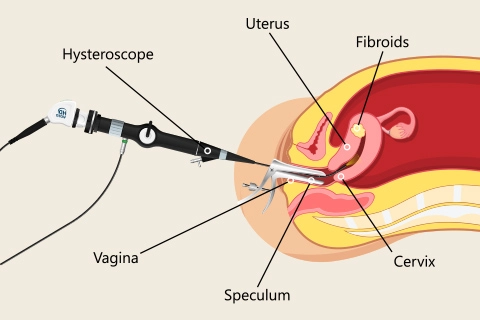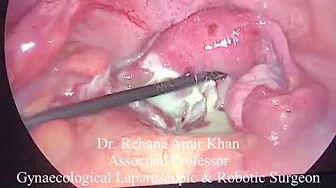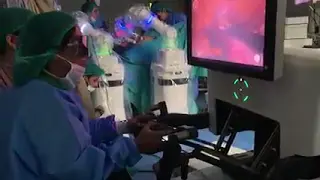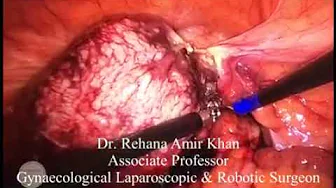Diagnostic Hysteroscopy
DIAGNOSTIC HYSTEROSCOPY
If you are facing any kind of problems that are mentioned below, visit best gynecologist in lahore immediately

If you are facing any kind of problems that are mentioned below, visit best gynecologist in lahore immediately
A hysteroscopy is used to diagnose and treat problems with the womb and uterus. A thin, telescope-like camera is slid into the uterus via the vagina. At the end of the camera is a light called a hysteroscope.
Diagnostic hysteroscopy is done to check for abnormal uterine bleeding. Abnormal bleeding was defined as menstrual periods that were heavier, more frequent, or lasted longer than usual. Women can also experience abnormal bleeding before puberty or after menopause, and bleeding after routine menstruation is another abnormality.
The second type of hysteroscopy, called operative hysteroscopy, uses a hysteroscope as a surgical instrument.
Menstruating women cannot undergo hysteroscopy. It's usually done in a hospital or doctor's office and doesn't require an overnight stay.
You don't have to worry about the diagnostic hysteroscopy as :
DIAGNOSTIC HYSTEROSCOPY
Why hysteroscopy is crucial for your health?
The goal is to diagnose or treat a problem with the womb or uterus. Two types of hysteroscopy are diagnostic and operative.
Women undergoing diagnostic hysteroscopy may need operative hysteroscopy at the same time, depending on the results.
The procedure of Diagnostic Hysteroscopy
A hysteroscopy may be performed to diagnose the condition or to investigate the cause of various problems.
In addition to abnormal bleeding, women may need a diagnostic hysteroscopy for reasons including:
Diagnose the cause of recurrent miscarriage( two miscarriages in a row).
Diagnosing certain conditions, such as fibroids or polyps, which are noncancerous growths in the uterus.
If pregnancy is an issue, investigate fertility issues.
Investigating pelvic pain experienced by women
It is done for congenital (by birth) uterine problem like septum(wall) in the uterus
If there are fibrosis or adhesions in the uterus.
How diagnostic hysteroscopy surgery is done?
Preparation for a hysteroscopy
Women may need to take a pregnancy test a week before a hysteroscopy and are advised to use appropriate birth control in between. This is because hysteroscopy cannot be performed on pregnant women.
If the fibroids are removed during surgery, medication may be prescribed ahead of time to reduce their size.
DIAGNOSTIC HYSTEROSCOPY
How is a hysteroscopy performed?
A speculum is inserted into the vagina during a hysteroscopy. This may cause mild discomfort.
Before surgery
Before a hysteroscopy, a woman may be given medication, usually a sedative, to help her relax. Depending on the situation, general or local anesthesia may be given to relieve any pain.
The healthcare team may also insert medication into the cervix to open or dilate the cervix. This is done to facilitate the implementation of the program.
During surgery
An instrument called a speculum is then inserted into the vagina to open it wider before the hysteroscope is inserted. To help doctors see the lining of the uterus more clearly, fluid is pumped into the uterus through a hysteroscope. The amount of liquid introduced will be closely monitored throughout the process.
As the hysteroscope is moved gently inside the uterus, images of the tissue and the opening of the fallopian tubes are displayed on the monitor.
As the hysteroscope is moved gently inside the uterus, images of the tissue and the opening of the fallopian tubes are displayed on the monitor.
DIAGNOSTIC HYSTEROSCOPY
Recovery after diagnostic hysteroscopy
After a hysteroscopy, some period-like bleeding and cramping are normal.
If a general anesthetic was used before surgery, a person may need to wait until the effects wear off before going home.
Most women felt they could go back to their normal activities the next day, and some women were even able to go back to work the same day. If general anesthesia is used, a few days off is recommended.
There may be some spotting or bleeding for a few days after the procedure, and women may experience cramp-like pain similar to menstrual cramps. These symptoms are normal.
Women are advised to avoid intercourse for a week or until the bleeding stops to reduce the risk of infection.
The risk of complications is small only in women who undergo operative surgery rather than diagnostic procedures.




